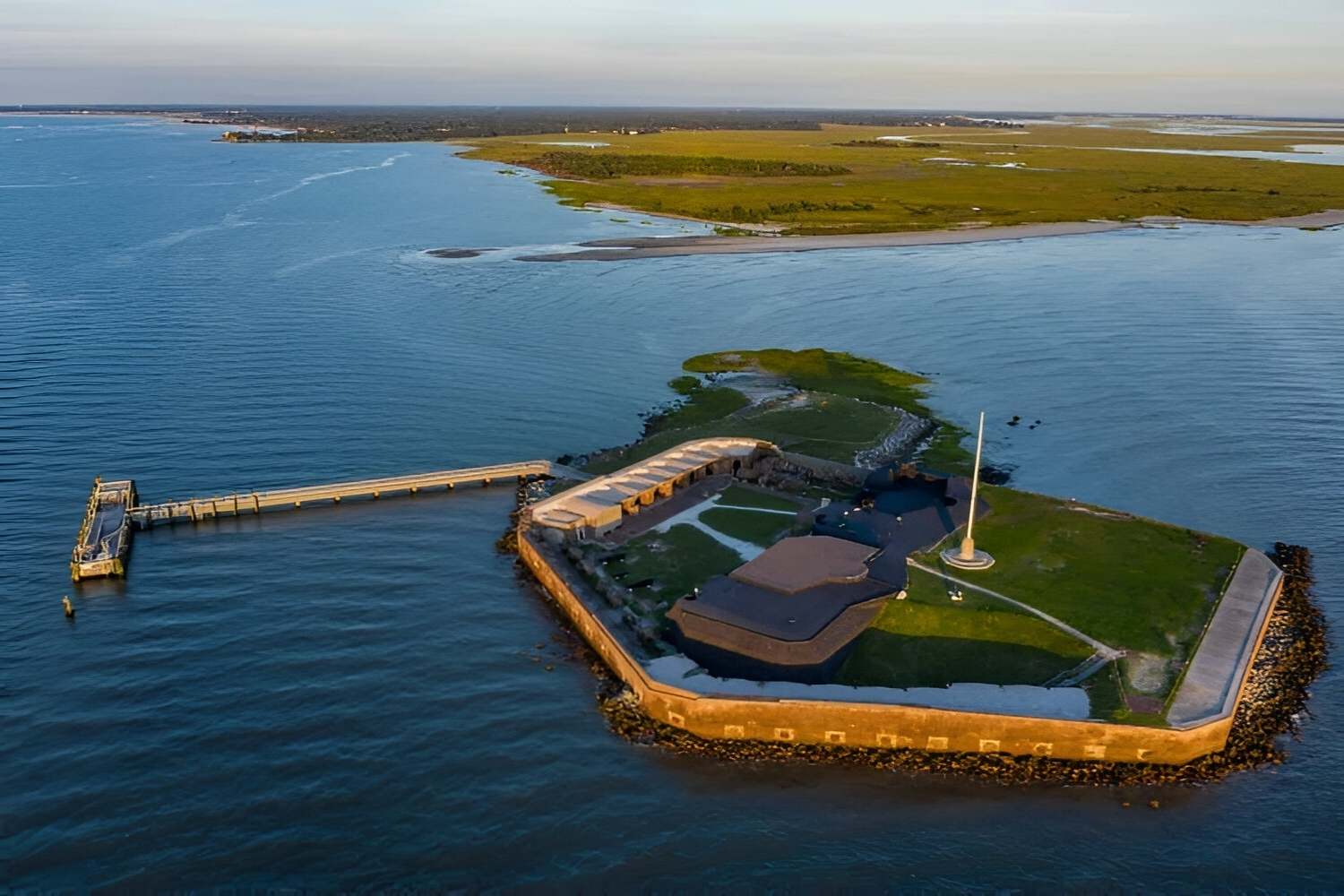The Untold Story Of Fort Sumter

Fort Sumter holds a significant place in American history. Located in Charleston Harbor, South Carolina, this sea fort is where the first shots of the Civil War were fired on April 12, 1861. The battle at Fort Sumter marked the beginning of a conflict that would shape the nation’s future. Today, visitors can tour the fort and learn about its role in the war. The site offers a glimpse into the past, with preserved structures and informative exhibits. Whether you're a history buff or just curious, Fort Sumter provides a unique opportunity to understand a pivotal moment in U.S. history.
The Birthplace of the Civil War
Fort Sumter, located in Charleston Harbor, South Carolina, holds a significant place in American history. This fort is where the first shots of the Civil War were fired, marking the beginning of a conflict that would shape the nation. Let's explore some fascinating aspects of this historic site.
The Construction of Fort Sumter
The construction of Fort Sumter began in 1829, part of a series of coastal fortifications. Its strategic location was meant to protect Charleston from naval attacks. However, it would soon become the focal point of a much larger conflict.
Foundation and Design: Built on an artificial island, Fort Sumter's foundation consists of granite blocks and other materials transported from New England. Its pentagon shape and thick walls were designed to withstand heavy bombardment.
Armament: The fort was equipped with 135 cannons, though not all were operational at the start of the Civil War. These cannons were intended to defend against enemy ships entering the harbor.
Garrison Life: Soldiers stationed at Fort Sumter lived in barracks within the fort. Daily life included drills, maintenance, and preparing for potential attacks.
The First Shots of the Civil War
On April 12, 1861, Confederate forces fired upon Fort Sumter, marking the start of the Civil War. This event set the stage for a four-year struggle that would determine the fate of the United States.
The Siege: Confederate forces, led by General P.G.T. Beauregard, demanded the surrender of Fort Sumter. When Union Major Robert Anderson refused, the Confederates opened fire, bombarding the fort for 34 hours.
Surrender and Aftermath: With supplies dwindling and no reinforcements in sight, Major Anderson surrendered Fort Sumter on April 13, 1861. The fort remained in Confederate hands until 1865.
Symbolic Importance: The fall of Fort Sumter galvanized both the North and South, leading to a surge in enlistments and the mobilization of armies. It became a symbol of the conflict's beginning.
Fort Sumter Today
Today, Fort Sumter is a National Monument, preserving the history and legacy of this pivotal site. Visitors can explore the fort and learn about its role in American history.
Visitor Center: Located in Liberty Square, the Fort Sumter Visitor Education Center offers exhibits and displays about the fort's history and the Civil War. Interactive exhibits provide a deeper understanding of the events that took place.
Boat Tours: Access to Fort Sumter is by boat, with tours departing from Liberty Square and Patriots Point. The boat ride offers scenic views of Charleston Harbor and a unique perspective on the fort's location.
Exploring the Fort: Once on the island, visitors can explore the remains of the fort, including the original walls and cannons. Rangers provide guided tours, sharing stories and insights about the fort's history.
Special Events: Throughout the year, Fort Sumter hosts special events, including reenactments, educational programs, and commemorations. These events offer a chance to experience history firsthand.
The Legacy of Fort Sumter
Fort Sumter's legacy extends beyond its walls. It serves as a reminder of the sacrifices made during the Civil War and the enduring struggle for unity and freedom.
Educational Programs: Schools and educational groups often visit Fort Sumter to learn about the Civil War and its impact on American history. Programs are designed to engage students and foster a deeper understanding of the past.
Preservation Efforts: Ongoing preservation efforts ensure that Fort Sumter remains a testament to history. Conservation projects help maintain the fort's structure and artifacts for future generations.
Cultural Impact: Fort Sumter has been featured in literature, films, and documentaries, highlighting its significance in American culture. Its story continues to inspire and educate people around the world.
Fort Sumter's Legacy
Fort Sumter stands as a powerful reminder of America's past. This historic site marks the beginning of the Civil War, a conflict that shaped the nation. Visiting Fort Sumter offers a chance to walk through history, see where the first shots were fired, and understand the struggles faced by those who lived through it.
The fort's ruins and museum provide a vivid picture of the era. Learning about the battles, strategies, and daily life of soldiers brings history to life in a way books can't. Fort Sumter's story is not just about war; it's about resilience, change, and the journey toward a united country.
Whether you're a history buff or just curious, Fort Sumter is a must-see. Its legacy continues to teach and inspire, reminding us of the importance of understanding our past to build a better future.

